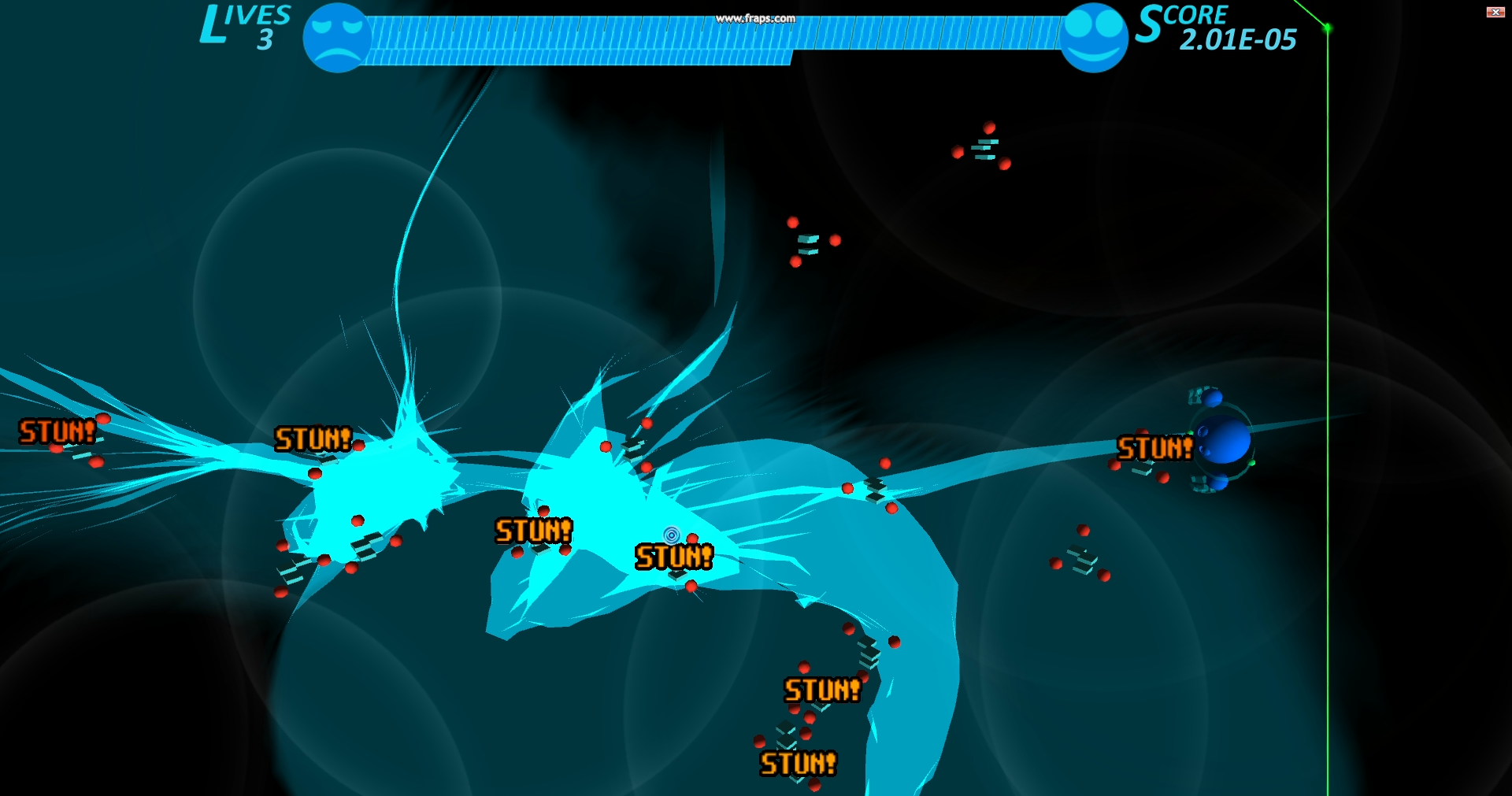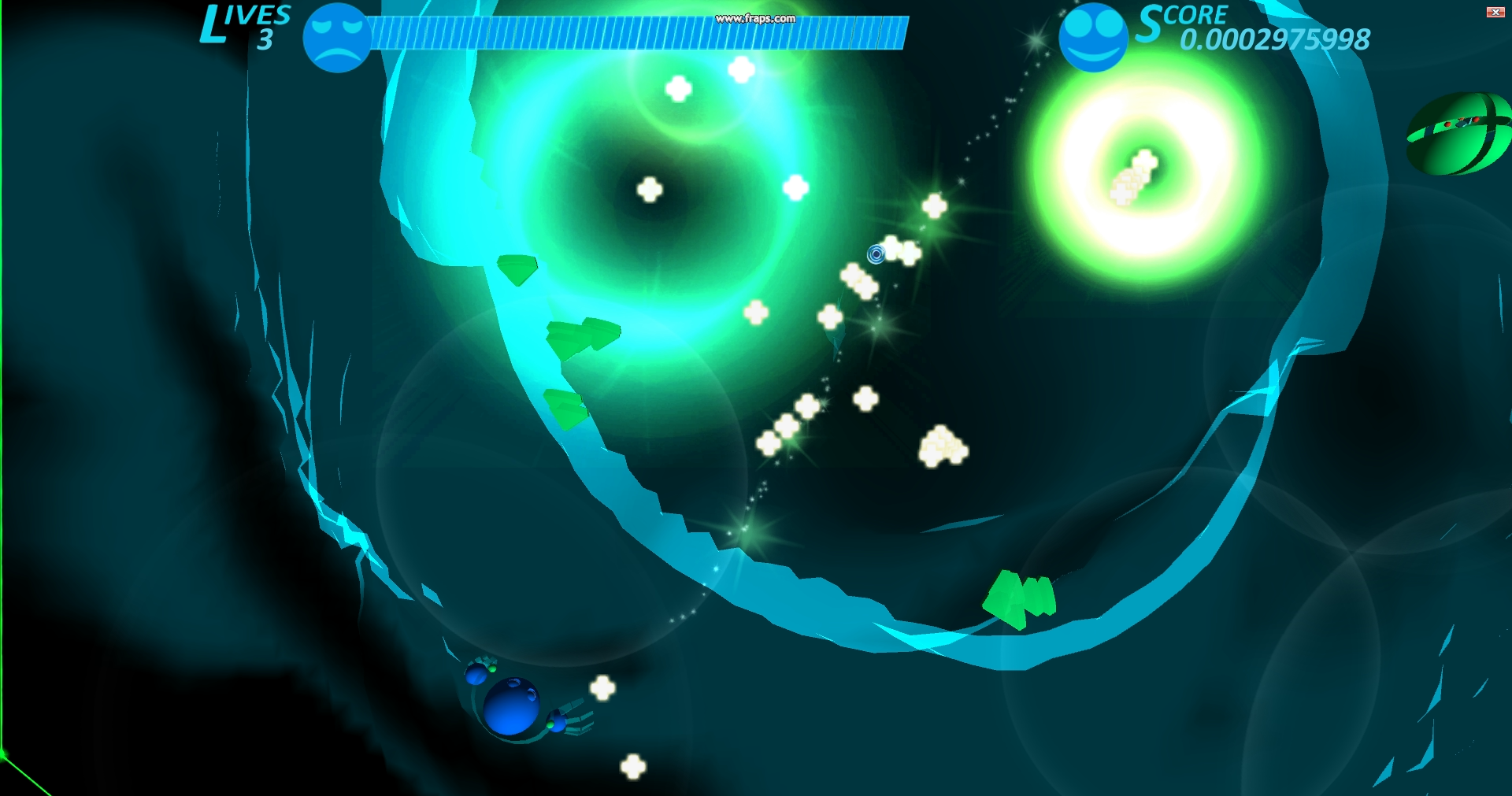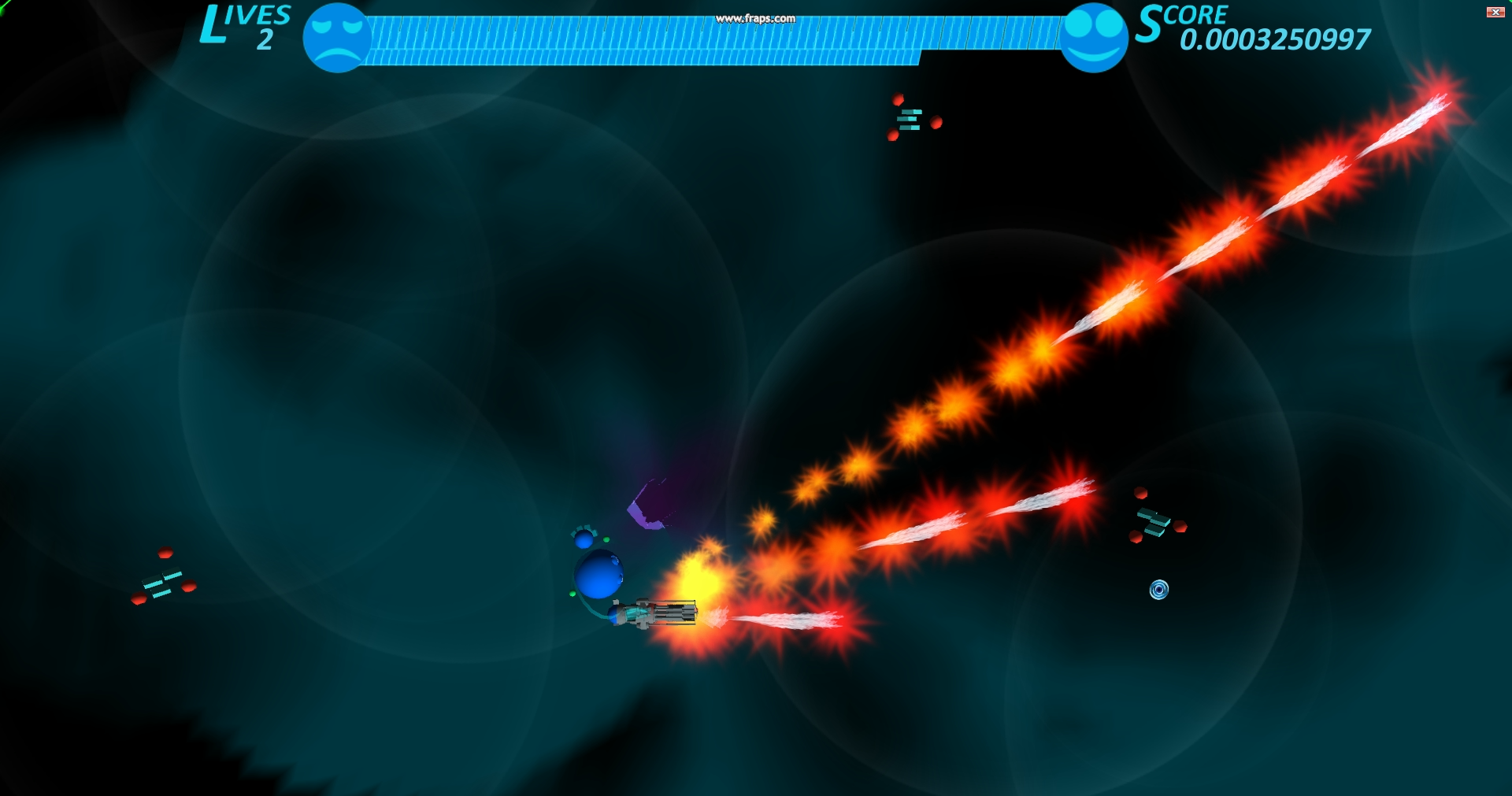“Quark”
Where Physics and Gaming ... Collide

As one last throwback to TiltExpo 2014, I’d like take you deep underground into the bowels of the Large Hadron Collider.
Here physicists from all over the world work tirelessly to unlock the biggest secrets of our universe. This is the setting for the fast-paced, explosion-filled, arcade-style, dual-stuck shooter from the developers at Iron Dynamite that will keep you muttering that age old gamer mantra: "Ugh! ... Ok, just one more time.”

The hero of our story is Quark, a sub-atomic particle on a mission to find and rescue his friend, Higgs. The game is all about stunning enemies and setting off chain-reactions but catching them all in each other’s explosions, all the while dodging whatever angry thing the LHC may have cooked up. As you’re shooting and dodging, you pick up little particles that charge him up, and when Quark is at full strength, you’re unlock access to the super weapon roulette where every weapon is capable of unleashing a different flavor quantum chaos.

Player Theory sat down with developer Mitch Johnson to find out more:
Player Theory: Tell us a little about how Iron Dynamite got started. I saw at your tiltExpo table that you have also produced a card game called “Quizznar”. When you started the company, was your intent to eventually make it into developing video games?
Mitch Johnson: Iron dynamite got started unofficially back in February 2013. Originally it was me, our writer Webb Craven, and our designer Josh Gasell. We were all just sitting around talking about wanting to make games and we decided, hey, why not start a company and do it? We actually set out from the start to make both card games and video games, since we enjoyed both and had the talent to make both products. So why not capitalize on that? Later on, we filled out the team with our web designer, Harrison Collins, our 3D animator, John Manconi, our 3D modeler, Carl Benson, our musician, Brian Davis, and our Internet marketing specialist, Amanda Gabriel.

PT: "Quark" is such a clever idea with an even more clever concept behind it. You had to be in a certain kind of environment to inspire such a world. Care to share that story?
MJ: Haha! Thank you. “Quark” actually has a bit of history behind it, as its initial concept was my final project back in college in 2009. My major was simulation and game design and, as you can imagine, our final project was to make a game. Had I paid attention to the actual course structure while I was there I might have noticed that the way it was laid out was to allow us to, over the course of two years, plan out, design, and make concept art for our final project, then use the 10 weeks during our final project class to put it all together. But because I was like most students there, I spent most of my time playing games, fiddling with side projects, and keeping up with other classes, so when the time came around, I didn't really have a clear idea of what to do, much less what to do in 10 weeks.
Then, on a walk from one of my classes to my first final project class, I had sort of a "eureka moment." My game designer mind suddenly remembered a weird Japanese game on the Xbox Live Arcade called “Every Extend Extra Extreme” made by the geniuses over at Q Entertainment. In that game you are a floating ... thing (it was a geometric object and there was no real story behind the game), and the idea was to self-detonate on beat with the background music and create large chain reaction combos. Being a huge fan of "Smash TV," I thought. "What if I took the multi-directional shooting mechanic from 'Smash TV' and put it together with this chain reaction concept?" Thinking about a theme, I recalled that there had recently been news about the LHC. What better setting for chain reaction explosions and things randomly colliding with each other than the quantum level of matter. I’d say that was a fairly productive walk.
Given that I had only 10 weeks working alone, I felt that this would be an achievable project, and as you can imagine, the next two months had me gorging on caffeine and producing all the art, programming, and design myself which I did using good ol’ XNA. Now that I think about it, I don't think that first version had any sound. Nevertheless, it wound up going over well at the student presentation and at a couple of college-sponsored booths at conventions around the area held to promote the degree. When we officially founded Iron Dynamite earlier this year, "Quark" seemed was the obvious choice to go with as our first video game outing.

PT: The demo version that you has at tiltExpo was really fun, fast-paced, and addictive! If you don't mind, what are the plans to expand the game? Will there be quests or other characters?
MJ: Why thank you! I'm glad you enjoyed it. We are definitely adding in more super weapons with which people can unleash even more quantum chaos. In addition to that, we'll be adding in a campaign mode: the epic story of our little hero, Quark, fighting against all the horrors of quantum space to rescue his war buddy Higgs (a boson in the navy). As of right now, there's no plans to include other characters, but that may change between now and when it is released.
PT: Have you been involved in game development before? If you have, what other projects were you and your team involved with?
MJ: I've been dabbling in various game projects on my own and with friends since college. In 2012, I got my chance to do it professionally at a company down in Fayetteville, [N.C.] called NavTech 3D. There I worked with one of my best friends, John Manconi, our current 3D animator, on some educational simulations. However, as fate would have it, three months later, that branch of the company closed down, and we were left out of a job. After we left we stood around outside the office building for a while talking over what to do next. Over the course of about an hour, some of our across-the-hall-neighbors, K3 Enterprises, found out that I was a programmer and that John was a 3D artist, and we wound up getting interviews for the same jobs we had just lost. We started work there in Jan. 2013 and continued to work on educational simulations and getting some experience in an actual development environment. I worked there until about 2014. Currently, I work a fulltime job during the day as an IT Technician and at night as Batma-- I mean a programmer at Iron Dynamite.

PT: Haha! As the programmer they deserve? *wink* What are some of the differences you encountered between table-top card game design and video game design (other than the obvious things like having to learn to code, etc.)?
MJ: Hmm, good question. They are incredibly different design spaces to be sure. The main difference is the fact that most video games happen in real time, whereas tabletop games are turn based, so designing a game with that pacing in mind is always interesting. One design difference we encounter most often is player immersion. In a video game, unless its multiplayer, the game pacing relies on setting up a single player experience with action scenes, level design, and a setting to keep the player constantly on their toes, whether that is an adrenaline rush in combat or being emotionally engaged during story segments. In a card game, however, its primarily a social experience, and your main method of player immersion is the ways you interact with the other players at the table. In our game "Quark," enemies are always being thrown at you in varying forms to force the player to think quickly about positioning: what’s ready to be blown up, are there enough things near enough to that explosion, and so on. In our card game, “Quizznar”, its all about taking a moment to assess what everyone else has done, what you predict they will do, what cards they may have in hand, and then making your move based on that. The considerations range from tactical decisions ("Do I disrupt that guy's position because he's about to complete the next objective?") to social ones ("Do I mess with that girl because she's been winning all night?"). On the other hand, the art is also very important but can be approached in the same way. In “Quark,” the HUD is minimal to ensure players can keep tabs on what is going on around them without too much distraction. In “Quizznar”, the card art is minimal so players can glance around and quickly see what everyone's board state is and quickly make an assessment as opposed to needing to stop and read every card on the table every turn.

PT: Do you have any time frame for release set for yourselves?
MJ: We do! Assuming nothing major stops us our slated schedule for “Quark” is Q4 2014. “Quizznar” is already up on our site as a free Print and Play.
PT: If our readers want to keep up with “Quark” or any of your other projects, what is the best way they can do that? Are you planning on using any crowd-funding sites or getting on Steam Greenlight?
MJ: The best place to keep up with us is on our Facebook and soon our Twitter account. We've also heard that people like Instagram, so we'll be throwing up a bunch of pictures of the studio and the devs as the mood arises. Additionally, our website will have info about our products and other stuff we think would be fun for people to hear about. Right now, we're not going to be using crowd-funding for “Quark,” since we are able to handle it outside of our day jobs without needing additional funding, but for “Quizznar” we would really like to do a Kickstarter to be able to print professional copies for the masses if there seems to be enough interest in it. And we are absolutely going to get “Quark” onto Steam Greenlight, and we'll let people know when that goes live on all of our sites.